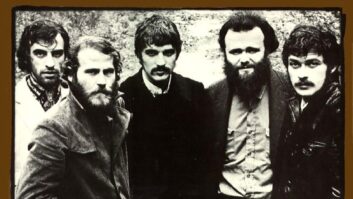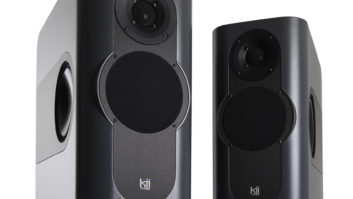If there’s a slow season in live sound, it’s January. Oh sure, there were a bazillion one-offs on New Year’s Eve, but between Christmas and Groundhog Day, a lot of the touring season pretty much hibernates or drops to a snail-mail’s pace. Many tours like to wrap up before the holidays, take a hiatus during the worst part of winter or merely wait until after the new year to start rehearsing for a new show.
Yet January marks a new beginning for weary touring pros, offering a good time to catch a breath and do some strategic planning for their needs in 2004. Depending on a P.A. company’s requirements, this could mean adding a new “A” speaker system, clearing out the “C” and “D” boxes, checking out new technologies for other major component purchases — whether it is amps, consoles, system controllers, trucks, etc. — or even ordering a couple gallons of Bondo and some flat-black spray paint to spiff up those tired road cases and beat-up sub boxes‥
And while the weather outside is frightful, the business climate for sound companies is no less chilly. Generally, artists are booking shorter tours — or at least into smaller venues, and the number of acts carrying full production is definitely lower than it was in years past, with more tours traveling with their front end and monitoring, and renting amps/speakers from local suppliers at each stop. And even in such cases, where the regional companies get part of the action for racks ‘n’ stacks, that rental for them is far less lucrative than supplying an entire show.
Meanwhile, those stalwart, tried-and-true acts you’ve worked with for years can suddenly disappear, either due to a change in artist management or simply due to the economics of the “we found someone cheaper” syndrome. Unfortunately, those money-in-the-bank clients you’ve depended on are difficult to replace, especially in a slow economy. The astute sound company will make sure that these acts don’t drift off from complacency or a lack of attention to their needs.
Predicting your sound company’s equipment requirements for the rest of the year is no easy task. Finding gear that was adequately designed to do the job might have been an issue 20 years ago. However, today’s selection is nearly overwhelming, and the main problem is selecting among many excellent choices. For example, in mains systems, the selection is vast, whether you’re looking at line arrays, traditional trapezoidal boxes or boutique designs, either from a manufacturer’s custom shop or proprietary home-brewed. On the console side, analog still dominates the market, but digital boards are definitely gaining ground.
Gear is important, and having the latest doo-dads certainly brings with it bragging rights, but running a successful sound company is also based on people, relationships and a history of on-time, reliable performance. Speaking of reliability, Murphy’s Law certainly applies when it comes to transplanting huge sound systems night after night, and an investment in backup gear, spares and redundant power supply systems is worth far more than gold when the need arises. In such cases, a sharp crew can — and often will — save the day, and having experienced, cool-under-fire staff is perhaps the best business investment of all.







